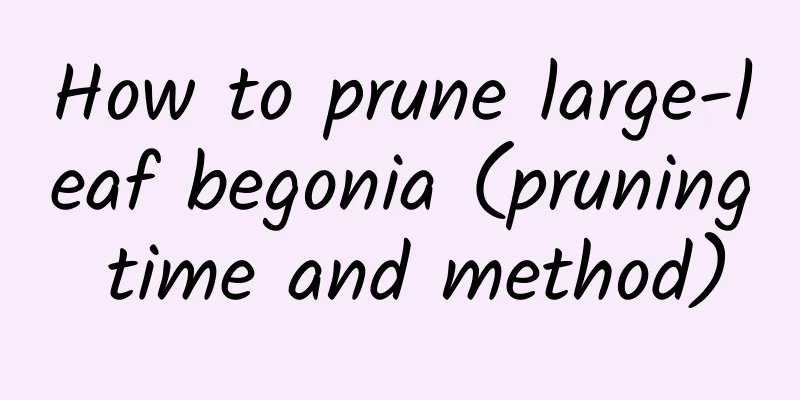How to preserve ginger seeds for the winter (how to preserve old ginger in winter for planting next year)

How to preserve ginger seeds in winterGinger is propagated asexually using underground tubers (or underground rhizomes) as seed material. Therefore, the quality of the ginger seeds directly affects the yield and quality of ginger planting in the following year. Generally, ginger seeds are stored in cellars during the winter . Cellar-stored ginger seeds have many advantages : plump rhizomes, bright and colorful ginger skin, fresh flesh without wrinkles or shrinkage, no storage diseases, few (or no) frost scars, no rotten or dead buds, and the germination rate of planting the following year is above 95%, without the occurrence of extreme situations such as missing seedlings or broken ridges. Construction of cellars for storing ginger seedsThe cellar can be dug below the surface or on the earth ridge . The core requirement is that the soil should be "vertical" and the groundwater level should be low, otherwise there will be collapse or "trampling" and water seepage in the cellar, and sometimes even injuries. When digging, the width of the cellar entrance is 60~80cm, and it becomes wider as it goes down, forming an underground cellar with a depth of 4 to 6 meters, a width of 2 to 3 meters at the bottom, and a length depending on the capacity (generally it can also be 2 to 3 meters). It can be a rectangular cellar or a square cellar. In the past, the cellar bottom was not hardened, and it was enough as long as the soil was flat. Now the cellar bottom is partially hardened, and the top is decorated with wood. The exit is left in a corner of the cellar for easy covering and management. The cellars dug with the help of earthen ridges are similar to the cellars dug underground, except that the underground cellars are dug deep below the ground level, while the earthen ridge cellars are dug parallel to the ground. However, the soil layer must be deep and hard, so that the cellar walls can be strong and upright, without water seepage or stepping on. The depth (3-4 meters) and size (2-3 meters in length and width) of the cellar can also be increased or decreased according to the storage capacity. Selection and storage management of ginger seedsAfter digging up the ginger on a sunny day (or cloudy day), remove the plant stems, place the ginger pieces on the cement floor and expose them to the sun for 1 to 2 days to remove the dirt on the ginger pieces. Then select the ginger pieces that are free of pests and diseases, undamaged, strong and beautiful as seeds to be stored in the cellar. In particular, ginger pieces with "signs" of soft rot and wilt should not be put into the cellar, as it will affect other strong ginger pieces. When stacking, a layer of ginger pieces is placed on top of a layer of dry sand (dry river sand is best), and some people also use corn stalks or rice stalks . In the middle of each large pile, 1 to 2 bundles of grass are placed vertically to help disperse the high temperature and moisture in the pile. Finally, a layer of fresh ginger leaves (about 5 cm thick) is placed on the top of the pile to keep moisture and increase oxygen. In the early stage of ginger storage, the ginger pieces emit more heat, water and carbon dioxide, so the temperature and humidity in the cellar are a bit high. Therefore, the cellar should be ventilated to dissipate moisture and heat , and sometimes an electric fan should be placed at the cellar entrance to blow air into the cellar, otherwise the ginger pieces will easily rot and deteriorate. When the cellar temperature drops below 10℃, the cellar entrance should be closed as soon as possible to allow the cellar to slowly heat up. Keep the temperature constant at 15℃~19℃ and the relative humidity between 50~60%. If you are not sure, buy a thermometer when building the cellar, and do not adjust the temperature and humidity based on feeling or experience. Finally, we need to check the cellar regularly on sunny or cloudy days . If we find that some ginger pieces are rotten, we need to "turn over the cellar" and clean and disinfect the cellar in time (the best and most economical disinfectant is quicklime), and remove the spoiled or rotten ginger pieces. |
Recommend
Sunflower, sunflower, gerbera... can you tell them apart?
Difference Between Gerbera and Daisy Gerbera and ...
The difference between poppy and corn poppy
Poppy and poppy have different names The scientif...
If you do this when the spring taro leaves turn yellow, they will turn green in minutes!
There are many reasons why the leaves of taro tur...
How to fertilize Gloxinia? Fertilizing like this will help the plants grow better!
How to fertilize Gloxinia You can make your own s...
How to grow Gloxinia flowers
Farming methods temperature The growth temperatur...
How to grow big-headed orchid
1. Breeding environment 1. Soil: To grow big-head...
Just pick a branch and stick it in the soil and it will grow, even in hot weather!
1. Million-dollar cuttings 1. Prepare the Soil Th...
When to repot the black orchid
1. Time to change pots The repotting of Mo Lan sh...
The Difference Between the Black Prince and Romeo
1. Leaf Difference The leaves of Black Prince are...
When is the best time to plant ginger?
Ginger prefers warm and humid climates and is sen...
How to grow a fortune tree
1. Breeding conditions 1. Soil: This plant prefer...
Cultivation methods and precautions of white sandalwood cactus
1. Maintenance methods 1. Soil: When preparing so...
You should eat more melons during the dog days to detoxify and remove dampness, so you will be in good health!
Eating cucumbers in the dog days of summer can cl...
What to do if the peace tree is frozen
1. Move to a warm place It likes warmth. When the...
Common diseases of hibiscus and their prevention and control methods
Hibiscus leaf spot Hibiscus leaf spot is a fungal...









